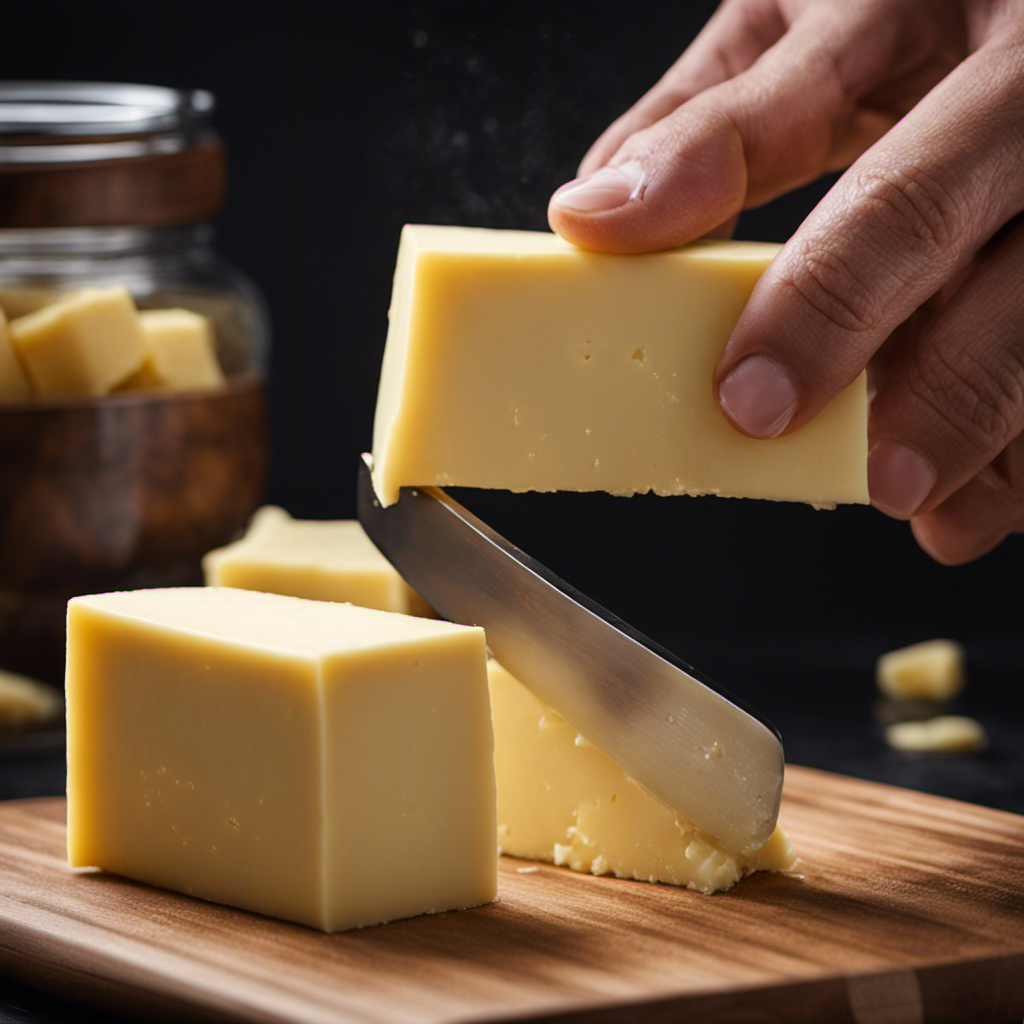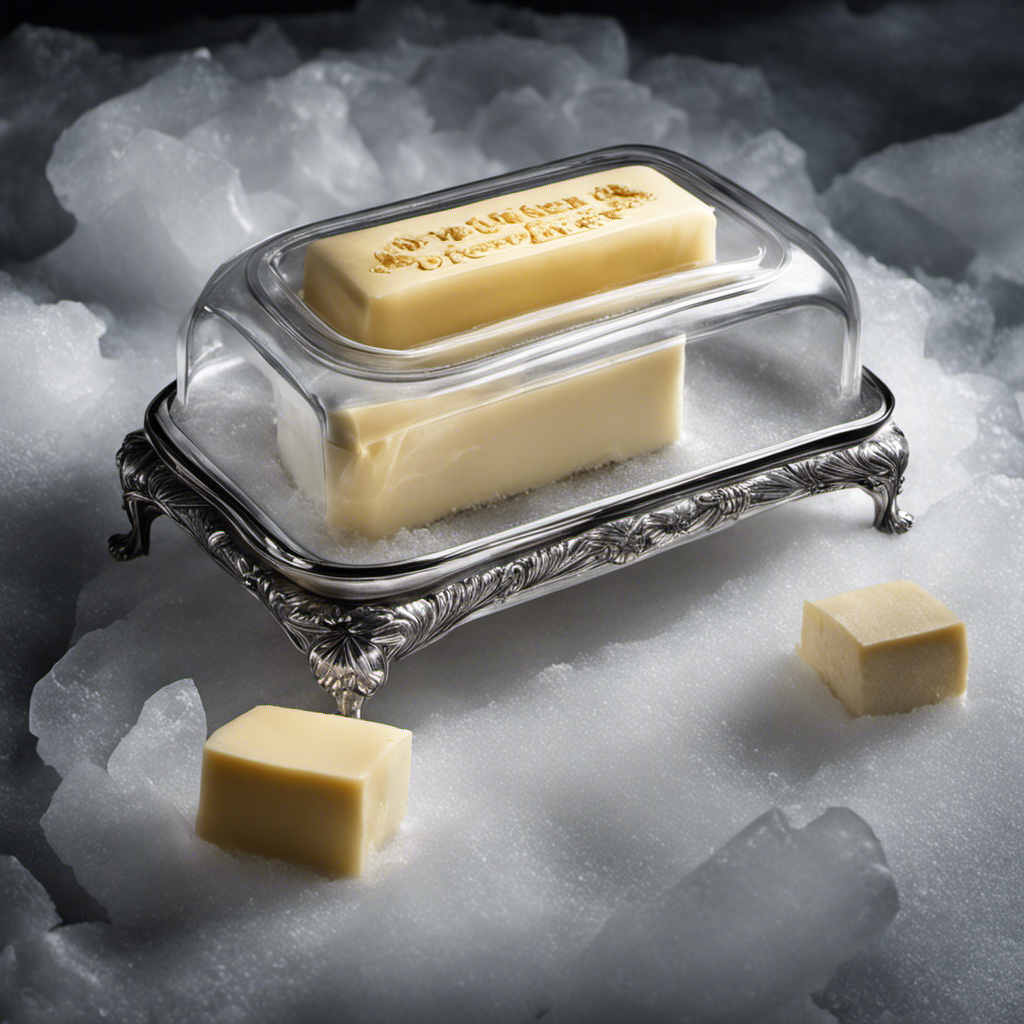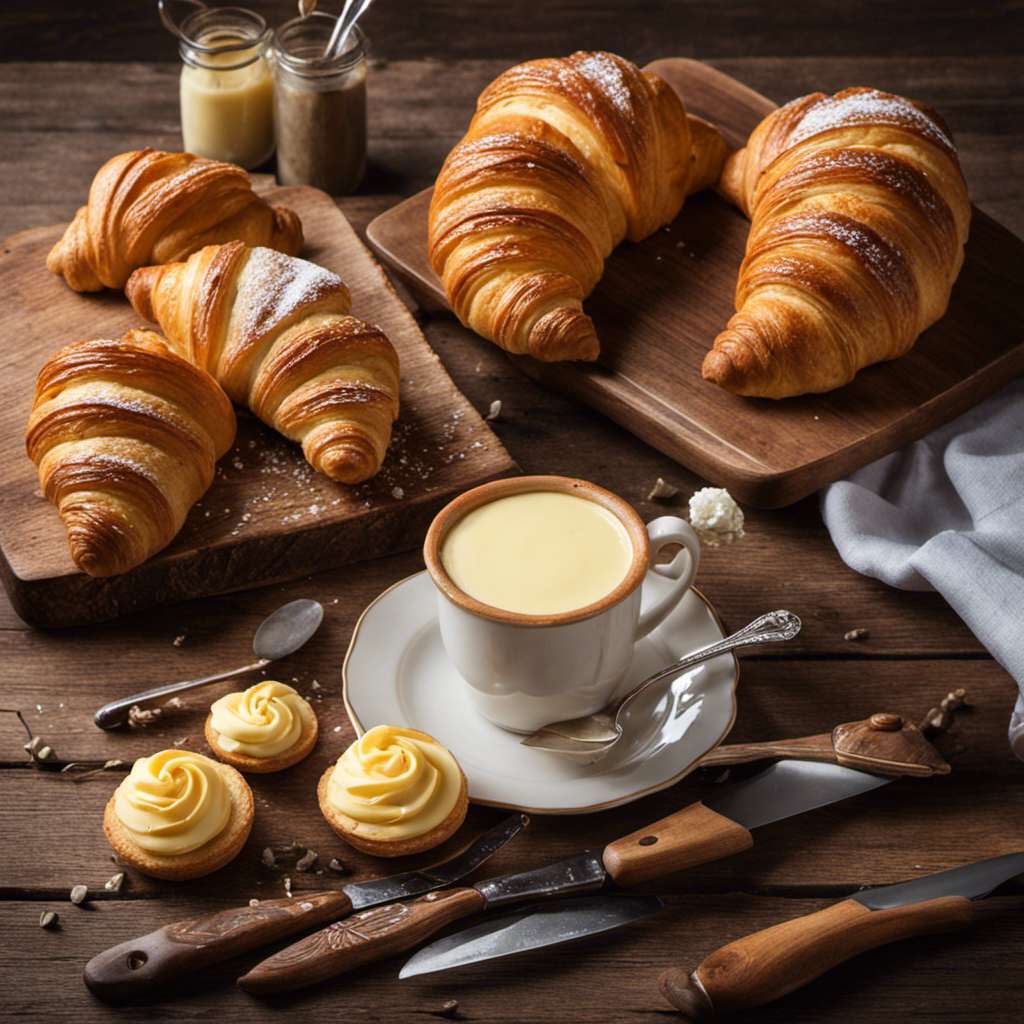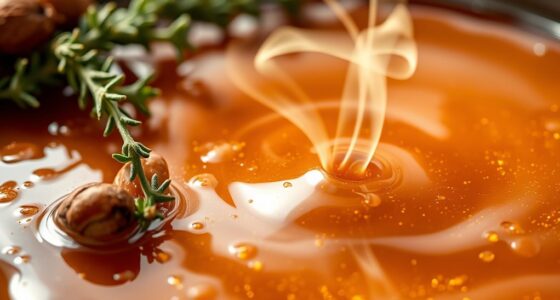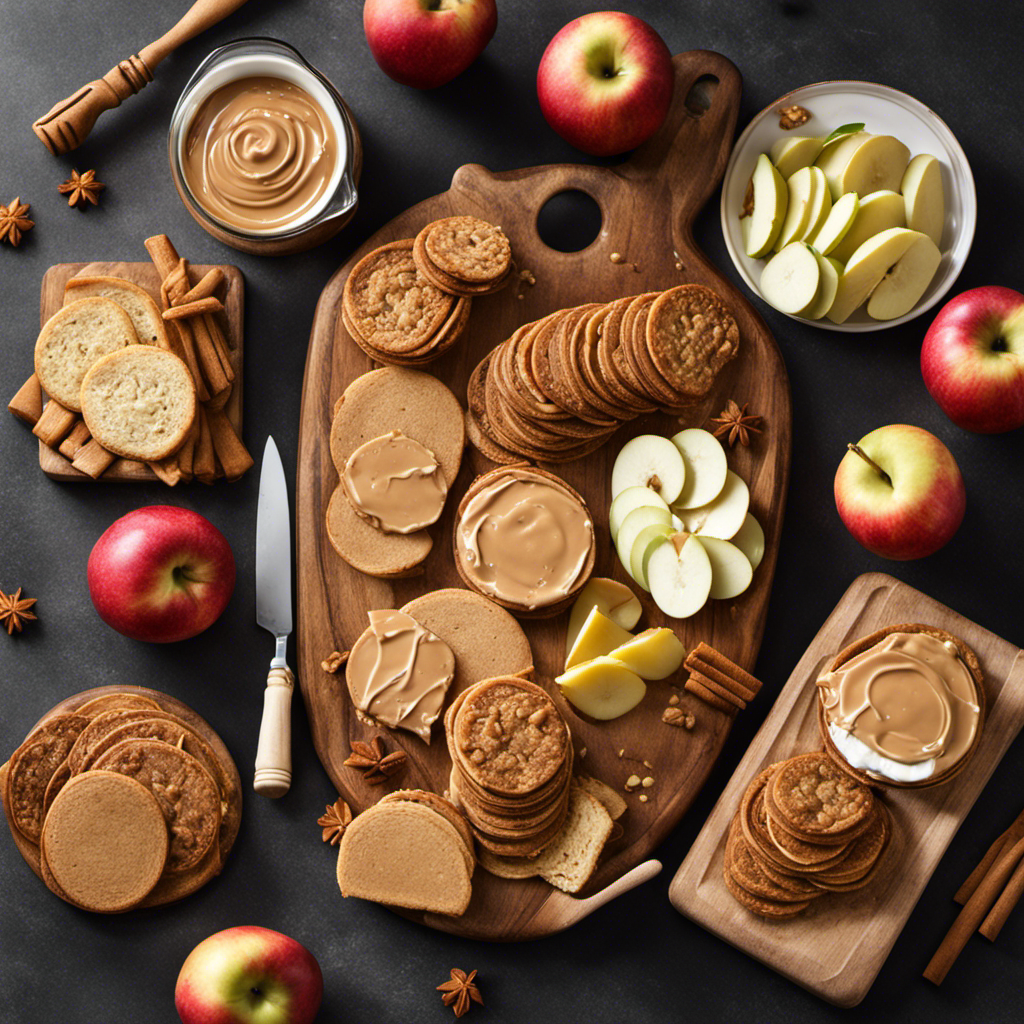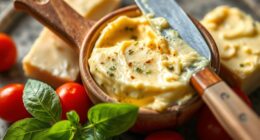Hey there! Have you ever struggled to spread cold butter evenly on your toast? If you have, fret not, because I have a great tip for you: cut your butter into cubes!
In this article, I’ll guide you through the simple steps to perfectly cube your butter, making it easy to measure and use in your favorite recipes.
Trust me, once you start cubing your butter, you’ll wonder how you ever lived without it.
Let’s get started!
Key Takeaways
- Softening the butter correctly is crucial for achieving evenly cubed pieces.
- Softened butter is easier to measure and work with in recipes.
- Cubed butter melts more quickly and evenly, resulting in a smoother texture in recipes.
- Cubed butter creates a flaky texture in pastry dough when the small pockets of fat melt during baking.
Step 1: Preparing the Butter
First, I’ll take the stick of butter out of the fridge and let it soften at room temperature. Softening butter is crucial for easier cubing. There are a few different ways to soften butter effectively.
One method is to leave it on the counter for about 30 minutes. This allows the butter to soften evenly without melting.
Alternatively, you can use a microwave. Start by placing the butter on a microwave-safe plate and heat it on low power for 5-10 second intervals until it’s soft but not melted. However, be cautious not to overheat it, as melted butter won’t cube properly.
Common mistakes to avoid when cubing butter include using melted butter or trying to cube it straight from the fridge. Softening the butter correctly is the key to achieving evenly cubed pieces.
Step 2: Measuring the Butter
Next, I’ll measure the amount of butter needed for the recipe. Measuring butter accurately is crucial for successful baking. Here are some measuring techniques and alternative butter cutting methods that you can try:
-
Softened Butter:
-
Use a butter knife to measure by tablespoons or teaspoons and level off the top.
-
Press butter into a measuring cup for a more precise measurement.
-
Fill a measuring cup with water and add butter until the water level rises to the desired measurement.
-
Cold Butter:
-
Cut the butter into tablespoon-sized pieces using a sharp knife.
-
Use a cheese grater to grate the cold butter.
-
Freeze the butter and then use a food processor to quickly cube it.
These techniques will ensure that you’ve the right amount of butter for your recipe, resulting in perfect baked goods every time.
Step 3: Cutting the Butter Into Cubes
Now I’ll proceed to cut the stick of butter into small, uniform pieces.
There are several different methods you can use to achieve perfectly cubed butter.
One common method is to first cut the butter into slices, then stack the slices on top of each other.
Next, cut the stacked slices into strips, and finally, cut the strips into small cubes.
Another method is to use a butter cutter, which is a handy tool specifically designed for cutting butter into cubes.
To ensure uniform cube sizes, it’s important to work with chilled butter. This helps the butter hold its shape and prevents it from melting too quickly.
Additionally, using a sharp knife and applying even pressure while cutting will result in more consistent cube sizes.
Step 4: Storing the Cubed Butter
To store the small pieces of butter, I prefer using an airtight container in the refrigerator. This ensures that the butter stays fresh and doesn’t absorb any odors from other foods in the fridge.
Here are some best practices for storing cubed butter to extend its shelf life:
-
Keep the container tightly sealed to prevent air and moisture from entering, which can cause the butter to spoil faster.
-
Place the container in the coldest part of the refrigerator, such as the back of the bottom shelf, to maintain a consistent temperature.
-
Avoid storing the butter near strong-smelling foods, as butter easily absorbs odors.
Step 5: Using Cubed Butter in Recipes
When using small pieces of butter in recipes, I find that they melt more quickly and evenly, resulting in a smoother texture and better incorporation into the dish.
Cubed butter is particularly useful when making pastry dough. The cold, cubed butter creates small pockets of fat within the dough, which then melt during baking and create a flaky texture. To incorporate cubed butter into pastry dough, simply cut chilled butter into small cubes and then use a pastry cutter or your fingertips to work the butter into the flour until it resembles coarse crumbs.
This technique works well for recipes like pie crusts, biscuits, and scones. Additionally, cubed butter can be used in recipes like cookies and cakes to create a tender crumb and add richness to the baked goods.
Frequently Asked Questions
Can I Use a Different Type of Butter for Cubing?
Yes, you can use different types of butter for cubing.
There are pros and cons to using different types.
For example, using salted butter adds a touch of flavor to your dish, but it may affect the overall saltiness.
Unsalted butter, on the other hand, allows you to control the amount of salt.
You can also use alternatives like margarine or shortening, but they may yield slightly different results in terms of taste and texture.
How Long Can Cubed Butter Be Stored in the Refrigerator?
Cubed butter can be stored in the refrigerator for up to two weeks. It’s important to properly store it to maintain its freshness.
To do this, place the cubed butter in an airtight container or wrap it tightly in plastic wrap. This will prevent it from absorbing odors from other foods in the fridge.
Additionally, make sure to keep it away from strong-smelling foods.
Can I Cube Butter in Advance and Freeze It for Later Use?
Yes, you can definitely cube butter in advance and freeze it for later use. Freezing cubed butter has several benefits.
It makes it easier to measure and portion out when needed for recipes. Additionally, frozen butter will keep its shape and texture, preventing it from melting too quickly when used in baked goods.
Just make sure to store it in an airtight container or freezer bag to prevent freezer burn.
What Is the Best Way to Store Cubed Butter to Prevent It From Drying Out?
To store cubed butter properly and prevent it from drying out, there are a few handy tips to keep in mind.
First, make sure the butter is wrapped tightly in plastic wrap or placed in an airtight container. This will help to keep moisture in and prevent any air from reaching the butter.
Additionally, storing the butter in the refrigerator can help to maintain its freshness and prevent it from drying out.
Can I Use a Food Processor or Blender to Cube the Butter Instead of Cutting It by Hand?
Using a food processor or blender to cube butter can be a convenient alternative to cutting it by hand. The main advantage is that it saves time and effort, as the machine does the work for you.
However, there are a few drawbacks to consider. Firstly, the heat generated by the motor can soften the butter, making it more difficult to work with. Additionally, the machine may not produce uniformly sized cubes, resulting in uneven melting or distribution in recipes.
Conclusion
After following these simple steps, you’ll be able to effortlessly cube butter for all your culinary creations.
The sight of perfectly formed cubes, soft and ready to melt into your favorite recipes, will fill you with a sense of satisfaction and anticipation.
With cubed butter at your fingertips, you can now effortlessly whip up delicious dishes that will leave your taste buds dancing with delight.
So go ahead, embrace the art of cubing butter and elevate your cooking game to a whole new level.
